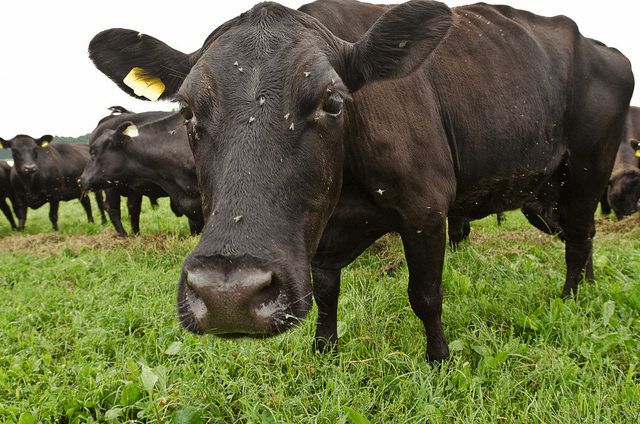You eat what your food eats. It’s an interesting thought, right? Intuitively, it makes sense if you consider the common warning to limit tuna and swordfish consumption because of the high mercury content that they absorb from the ocean. In a similar way, the quality of the beef you eat is heavily affected by how well that cow enjoyed its meals and how nutritious its food was during its lifetime. Grass-fed beef in particular has garnered much attention as a standard for nutritious beef, but what qualities make it such a prime cut?
Grass-fed cows are defined as those that have eaten nothing but grass from birth to harvest, have not been raised in confinement, and have not been exposed to antibiotics or growth hormones. Compared to grain-fed beef, grass-fed beef contains higher levels of healthy fats such as omega-3 and omega-6 fatty acids, antioxidants, and the vitamin A derivative known as beta carotene (which gives grass-fed beef a yellowish tint). If a cut of beef appears to have yellow fat, it’s not a rotten or poor piece of meat. It’s actually chockful of vitamin A, which boosts your immune system among other things.
Compared to grass-fed counterpart, grain-fed beef cuts are generally larger and cost less per pound at the supermarket. However, most of the surplus mass in grain-fed beef is composed mostly of fat and water retention. This is the result of using growth hormones and high-quantity, low-quality grains to grow the cows at maximum speed and minimal cost. Using low-quality ingredients results in low-quality beef, which can be seen by its low omega-3 and omega-6 fatty acid content and high saturated fat content, and it ultimately butchers the taste of the beef.
Grass-fed beef is not just healthier, it’s also tastier! Individual taste tests conducted by Huffington Post and Slate both concluded that grass-fed beef tasted the best out of a selection of beef cuts, including grain-fed beef and industry mass-produced beef.
Image Source: Jupiterimages
Researchers are still finding out more about grass-fed beef and other types of meat, so it is definitely possible for new information to come out that may refute current knowledge. In spite of all the controversy and contradictory information on the internet regarding health and nutrition, it’s possible to agree on one thing.
Let’s eat real food that eats real food.
Feature Image Source: 20130712-AMS-LSC-0396 by U.S. Department of Agriculture










